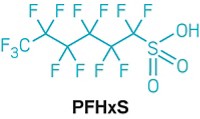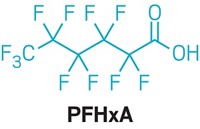Advertisement
Grab your lab coat. Let's get started
Welcome!
Welcome!
Create an account below to get 6 C&EN articles per month, receive newsletters and more - all free.
It seems this is your first time logging in online. Please enter the following information to continue.
As an ACS member you automatically get access to this site. All we need is few more details to create your reading experience.
Not you? Sign in with a different account.
Not you? Sign in with a different account.
ERROR 1
ERROR 1
ERROR 2
ERROR 2
ERROR 2
ERROR 2
ERROR 2
Password and Confirm password must match.
If you have an ACS member number, please enter it here so we can link this account to your membership. (optional)
ERROR 2
ACS values your privacy. By submitting your information, you are gaining access to C&EN and subscribing to our weekly newsletter. We use the information you provide to make your reading experience better, and we will never sell your data to third party members.
Persistent Pollutants
Ban insecticide methoxychlor, global experts recommend
Panel also tees up plastic additive UV-328 and flame retardant Dechlorane Plus for possible controls
by Cheryl Hogue
February 3, 2022
An influential experts panel on toxic contaminants is queuing up three commercial chemicals for possible global elimination under the Stockholm Convention on Persistent Organic Pollutants.
In late January, the Persistent Organic Pollutants Review Committee made key decisions about a pesticide, a widely used plastic additive, and a flame retardant. The committee examines chemicals for possible global controls and makes recommendations for action to governments that are party to the Stockholm Convention.
The three chemicals are:

Methoxychlor, an insecticide used on field crops, fruits, vegetables, livestock, and pets. It is highly toxic to invertebrates and fish and has been found in the Arctic, Antarctic, human blood, and breast milk. The review committee recommended that the parties of the Stockholm Convention ban the substance globally, without exemptions. The parties will decide in 2023 whether to adopt this recommendation, according to a statement from the United Nations.

UV-328, a high-volume ultraviolet stabilizer that is transported in plastics for long distances in the ocean. The review committee found that this chemical is likely to cause significant adverse human health or environmental effects. In the future, the panel will consider what sorts of global controls would be appropriate for the compound, the UN statement says.
Dechlorane Plus, a flame retardant used worldwide in electrical wire and cable coatings, connectors in televisions and computer rmonitors, and polymers such as nylon and polypropylene. Found in remote areas, including near the poles, as well as in human blood and breast milk, the substance is linked to endocrine disruption, nervous system problems, and, in marine organisms, oxidative stress. The review committee finalized conclusions about the substance’s risks, taking the chemical a step closer to possible elimination under the Stockholm Convention, the UN says.






Join the conversation
Contact the reporter
Submit a Letter to the Editor for publication
Engage with us on Twitter